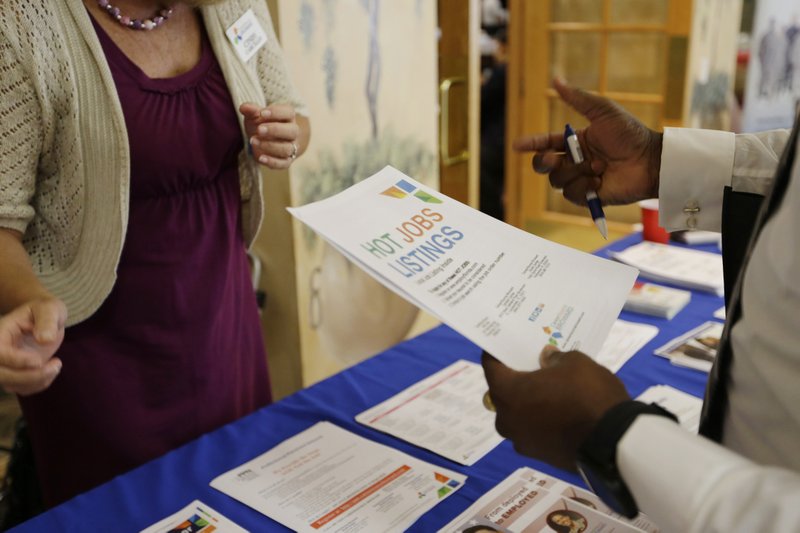The number of Americans filing applications for unemployment benefits rose last week from a three-month low, in part reflecting the typical swings during holiday periods.
Claims increased by 10,000 to 272,000 in the week ending Saturday, the Labor Department said Thursday. The median forecast of 46 economists surveyed by Bloomberg called for 270,000. The average over the past four weeks was the lowest so far this year.
Since Feb. 15 was the Washington's Birthday holiday, the jump may be more indicative of volatility associated with staff adjustments around a holiday, rather than weakness in the labor market. The struggles of the energy industry may also push up unemployment benefits claims in coming months, though growth in consumer spending means businesses will need to keep adding workers.
"The trend in claims is still very low," said Scott Brown, chief economist at Raymond James Financial Inc. in St. Petersburg, Fla. "There aren't many signs of job destruction. The labor market is getting tighter."
Another report showed that orders for capital goods rebounded in January, rising by the most since June 2014, signaling a pause in the manufacturing slump, according to figures from the Commerce Department.
No states estimated data for joblessness claims last week and there was nothing unusual in the figures, according to the Labor Department.
Economists' estimates in the Bloomberg survey for weekly claims ranged from 257,000 to 285,000. The previous week's figure was unrevised at 262,000.
The four-week moving average, a less volatile measure than the weekly claims numbers, decreased to 272,000 last week, the lowest since mid-December, from 273,250.
The number of people continuing to receive unemployment benefits fell by 19,000 to 2.25 million in the week that ended Feb. 13.
Since early March, claims have been below the 300,000 level that economists say is typically consistent with an improving job market.
Initial jobless claims reflect weekly firings, and a sustained low level of applications has typically coincided with faster job gains. Many layoffs may also reflect company- or industry-specific causes, such as cost-cutting or business restructuring, rather than underlying labor market trends.
Orders to U.S. companies for long-lasting manufactured goods advanced in January at the strongest pace in 10 months. A key category that tracks business investment surged by the largest amount in 19 months.
The bigger-than-expected gains could be a sign of better days ahead for the nation's beleaguered manufacturers.
Orders for durable goods, items ranging from autos and appliances to steel and machinery, rose 4.9 percent last month, the Commerce Department reported Thursday. That represented a rebound from a 4.6 percent plunge in December and a 0.5 percent decline in November.
Demand for capital goods, a category that serves as a proxy for business-investment plans, rose 3.9 percent in January, reversing a 3.7 percent fall in December. It was the biggest advance in this category since June 2014.
"It's good in the sense that we're not getting further deterioration," said Brett Ryan, U.S. economist at Deutsche Bank Securities Inc. in New York. "Exports are continuing to get hit by the dollar and you have slowing global growth, [capital expenses are] probably going to be a bit challenged for the next few quarters."
The overall increase was led by a 54.2 percent surge in demand for commercial aircraft, a very volatile category that can swing sharply from month to month depending on orders to Boeing. Demand for defense aircraft and parts also increased in January, rising 84.8 percent. Orders for autos and auto parts rose 3 percent, as automakers continued to enjoy strong demand.
Orders in all transportation categories rose 11.5 percent. Excluding transportation, durable-goods orders were up a more moderate 1.8 percent, still the best showing since June 2014.
The 4.9 percent overall increase was double what many private economists had been forecasting. It could be a sign of brighter prospects for manufacturing in 2016 after a rough 2015 in many sectors. U.S. companies have been hurt by a weak global economy and a rising value for the dollar, which makes their goods less competitive on overseas markets.
Information for this article was contributed by Shobhana Chandra and Michelle Jamrisko of Bloomberg News and Martin Crutsinger of The Associated Press.
Business on 02/26/2016
